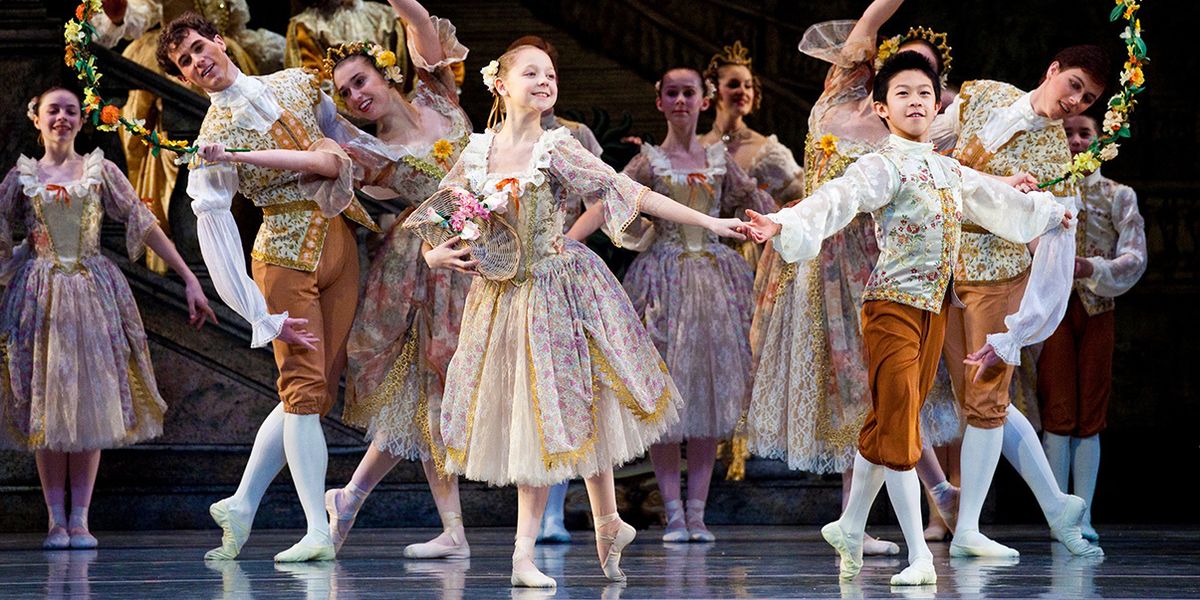From "The Nutcracker" to the Olympics: How Ballet Helped Figure Skater Nathan Chen Reach the Top
From ages 8 to 14, Nathan Chen trained at the Ballet West Academy and often performed alongside the company. Now, he is well on his way to becoming a household name. Earlier this month, Chen won the national title at the U.S. Figure Skating Championships, and he’ll be heading to the Olympics in Pyeongchang, South Korea, as a member of the U.S. Figure Skating Team in February. If that’s not impressive enough, you can now pop into your local grocery store and pick up a box of Kellogg’s Corn Flakes with his photo on the front.
Chen is known for his exceptional musicality and artistry on the ice and has broken records for cleanly landing five quadruple jumps in one program.”My training and ballet background definitely gives me the competitive edge,” Chen said to an NBC News correspondent last fall. We touched base with Peter Christie, one of Chen’s former instructors at the Ballet West Academyand a supplemental coach on the ice, to get a better sense of how ballet influences the record-breaking 18-year-old figure skater.
What do you remember about Nathan Chen as a young student?
He was very focused already and had a lot of natural talent. He definitely had a proclivity to turning very well, which probably lends itself to his ability to do quads and things like that. But he was also very eager to focus on his artistic abilities at the same time.
Was Chen already skating when he started ballet?
Yes, he had a couple of siblings who were also involved with dance, and his mother was very inclined to make sure they were all exposed to all of the arts. He was involved with gymnastics and a number of other activities as well. I think she knew that the artistic side of skating can be challenging later on, and it was a deliberate focus for her that if that’s the route he’s going down, he has had this experience.
Some of the technical elements of skating and ballet, such as turning and spotting, are very different. Did Chen have a hard time going back and forth?
I think he found it very natural to go from one to the other. With skating, you go where the blade goes, but in ballet we really reinforce our rotation and turnout. Nathan had wonderful turnout, and would have made a great dancer that way. His arabesque line and how he carries his arms while he’s skating really show his technical skills from ballet.
Chen performed featured roles in The Nutcracker and Sleeping Beauty with Ballet West. What was he like onstage?
The participation in those roles really helped him with his performance abilities. As a child, Nathan was very quiet and thoughtful, not extravagant in his interactions with people, but as an actor onstage he really had to project to the last row of the theater. That was good practice for the arena, which is much bigger; subtlety isn’t going to get you very far.
 Nathan Chen with artists of Ballet West in “The Nutcracker” (2011). Photo by Luke Isley, Courtesy Ballet West.
Nathan Chen with artists of Ballet West in “The Nutcracker” (2011). Photo by Luke Isley, Courtesy Ballet West.
What was it like coaching Chen on the ice?
He would sometimes pull Ballet West staff into his coaching; Cati Snarr, another teacher here, and I both worked with him in the ice arenas. Knowing what his training was like in the studio, we worked on expanding those qualities and helping him to be bolder.
A lot of the music that Chen uses in his routines comes from ballet. Can you speak to that?
He did a piece to Nutcracker Suite, and his long program includes clips from Rite of Spring with a Chinese composer’s work blended in. I think that comes a lot from his exposure here, standing backstage and watching the professional dancers. I think that seeps into the brain and has a kind of subliminal influence on where he gets his artistic approach.





